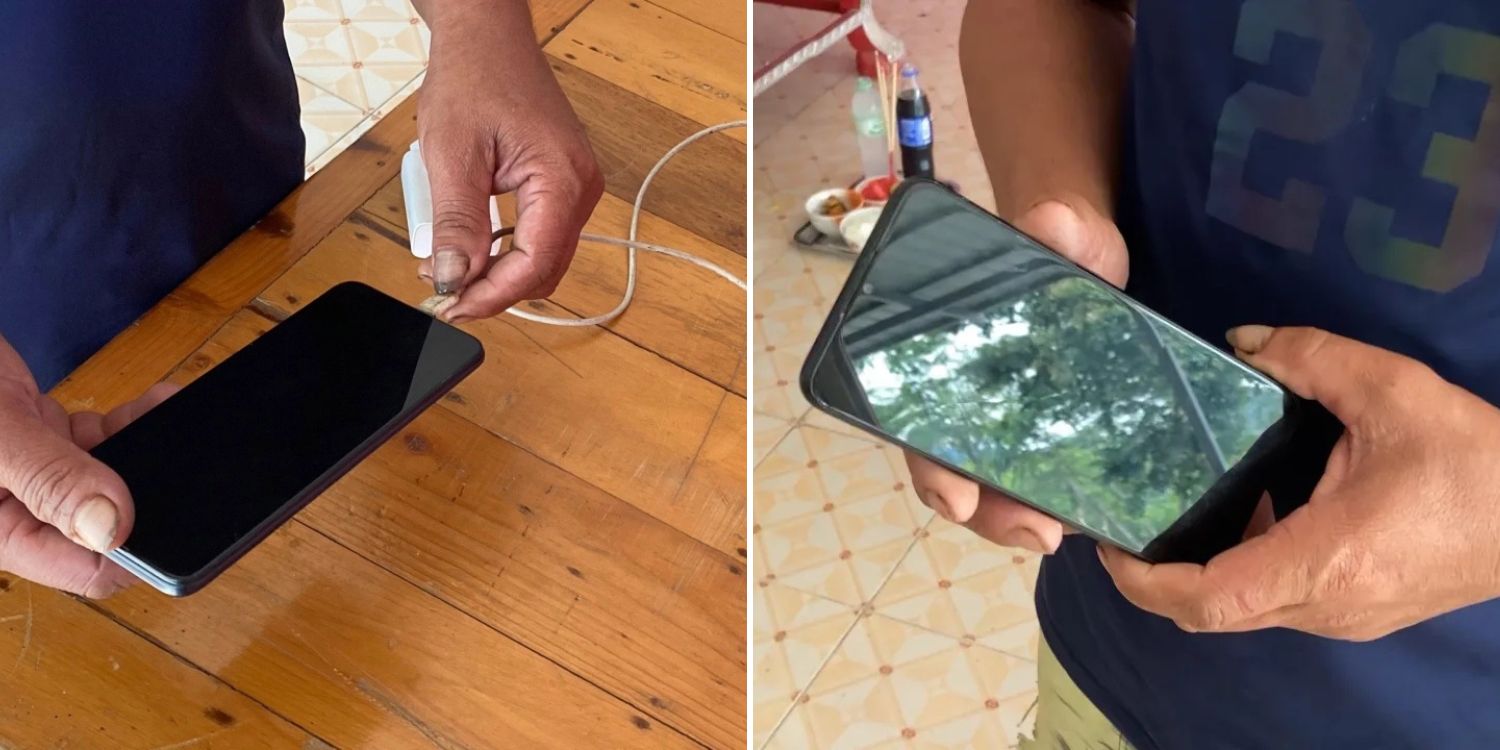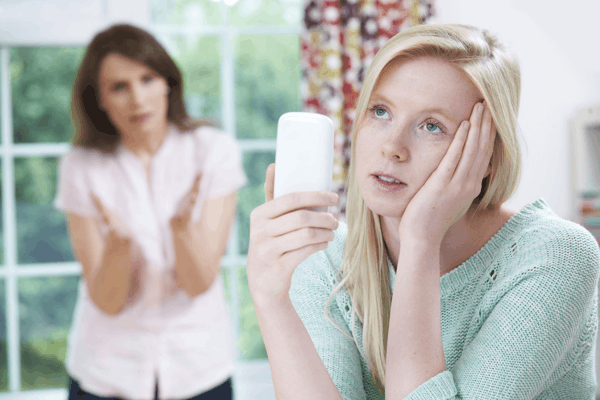Smartphones have become an essential part of daily life for both adults and children. As these devices offer convenience, entertainment, and easy communication, their usage among teenagers continues to grow. According to Pew Research Center, more than 95% of U.S. teens have access to a smartphone (Pew Research Center, 2023).
However, with widespread usage comes the need for awareness about safety practices, particularly when charging devices. A notable incident involving a teenager from Illinois has raised important questions about the potential risks associated with using cell phones while they are plugged in.
This article explains the verified details of the incident, explores expert-backed electrical safety guidance, and offers practical recommendations to help families reduce the risk of electrical injuries.

The 2016 Illinois Incident: What Happened
In 2016, Jackie Fedro from Illinois shared a widely reported account of her daughter Gabbie’s injury while using her cell phone. According to multiple reputable sources including BuzzFeed News and CBS News, 13-year-old Gabbie received burns on her neck while talking on her phone as it was charging (BuzzFeed News, 2016; CBS News, 2016).
As reported, the incident occurred when an electrical current apparently traveled through the charging cable and made contact with a metal necklace Gabbie was wearing. This resulted in second-degree burns on her neck.
While rare, similar electrical injuries involving mobile devices have been documented. For instance, a 2018 U.S. Consumer Product Safety Commission (CPSC) report noted injuries linked to counterfeit or damaged chargers, underscoring the importance of using certified accessories (CPSC, 2018).
Understanding Electrical Burns and How They Occur
Electrical burns happen when an electric current passes through the body, generating heat that damages tissue. The severity depends on factors such as:
-
Voltage of the source
-
Duration of contact
-
Type of current (alternating vs. direct)
-
Pathway through the body
In Gabbie’s case, media reports described the necklace acting as a conductor, leading to a burn on her neck. While household charging voltages are typically low (5 volts for USB chargers), issues such as faulty wiring, damaged cables, or substandard chargers can pose hazards.
According to the National Fire Protection Association (NFPA), faulty or damaged electrical equipment is a leading cause of electrical injuries in homes (NFPA, 2023).
Are Cell Phones Dangerous When Charging?
Generally, reputable devices and chargers designed to meet safety standards are safe for normal use. The Electrical Safety Foundation International (ESFI) states that the risk of shock from a properly functioning, certified charger is very low (ESFI, 2023).
However, problems can arise in certain circumstances:
-
Use of counterfeit or uncertified chargers that do not meet safety regulations
-
Frayed or damaged cables exposing wiring
-
Using the device in a wet environment
-
Charging on or near flammable materials
Regulatory bodies such as Underwriters Laboratories (UL) and ETL test and certify chargers for safety. Using certified accessories is strongly recommended.
Manufacturer Recommendations and Industry Guidelines
Major smartphone manufacturers provide clear safety guidelines in user manuals. For example:
-
Apple advises users to “avoid prolonged skin contact with charging cables” if damaged or frayed (Apple, 2023).
-
Samsung warns against “using damaged chargers or cables”, as these may pose electrical hazards (Samsung, 2023).
These guidelines emphasize the importance of inspecting charging equipment regularly and replacing any damaged components.
Expert Safety Tips for Parents and Teens

To help minimize risks when charging and using phones, families can follow these best practices recommended by safety experts and agencies:
-
Always Use Certified Chargers
Choose chargers and cables approved by recognized safety labs (e.g., UL, ETL). Avoid cheap, unbranded, or counterfeit products. -
Inspect Cables Regularly
Look for frayed or exposed wires. Replace any damaged cables immediately. -
Avoid Using Devices in Wet Conditions
Water is an excellent conductor of electricity, increasing the risk of shocks. -
Do Not Use Phones While Charging if Cables Are Damaged
Even minor damage can pose serious electrical risks. -
Avoid Sleeping With Phones on the Bed While Charging
This reduces risks of overheating and potential burns. -
Teach Children Safe Charging Habits
Discuss the importance of not yanking cables or using devices with broken chargers. -
Keep Charging Areas Clear of Flammable Materials
Place phones on hard, flat surfaces while charging.
By following these recommendations, families can significantly reduce the likelihood of electrical injuries.
Why Certified Chargers Matter
One of the most important lessons from reported incidents is the role of charger quality. The U.S. Consumer Product Safety Commission has repeatedly warned consumers about the dangers of counterfeit or substandard chargers that may lack essential safety features (CPSC, 2018).
Certified chargers must meet rigorous safety standards, including:
-
Over-current protection
-
Over-voltage protection
-
Short-circuit protection
-
Temperature control
These features help prevent accidents such as overheating, fires, and electrical shocks.
Educating Teens About Device Safety
Given the high rates of smartphone usage among teenagers, education is key. The American Academy of Pediatrics suggests that parents establish clear rules about technology use, which can include safety practices when charging devices (AAP, 2023).
Parents can:
-
Discuss why using phones safely while charging matters
-
Show how to check chargers and cables
-
Encourage reporting of any unusual heat or damage
Creating an open dialogue about technology safety helps teens make informed decisions.

The Value of Sharing Verified Incidents
While Gabbie’s case is from 2016, it remains widely cited because it illustrates a real, verified incident that encourages safety awareness. Rather than spreading fear, the goal is to promote practical, evidence-based prevention.
By learning from real cases and expert recommendations, families can adopt habits that make smartphone use safer for everyone.
Conclusion
Smartphones are an integral part of modern life, offering essential communication and countless conveniences. However, safety should remain a top priority, especially when it comes to charging practices.
Verified reports, such as the 2016 Illinois incident, highlight the importance of using certified chargers, inspecting equipment regularly, and educating children about safe usage.
By following expert guidance and industry best practices, parents can help ensure that teens enjoy their devices safely—reducing the risk of preventable injuries while staying connected.
References
-
Pew Research Center. (2023). Teens, Social Media and Technology. Link
-
BuzzFeed News. (2016). Mom Warns About Cellphone Charging After Daughter Suffers Burns. Link
-
CBS News. (2016). Mom warns after daughter burned by phone charger. Link
-
U.S. Consumer Product Safety Commission (CPSC). (2018). Counterfeit Chargers Safety Warning. Link
-
National Fire Protection Association (NFPA). (2023). Electrical Safety. Link
-
Electrical Safety Foundation International (ESFI). (2023). Consumer Safety Resources. Link
-
Apple. (2023). Important Safety Information. Link
-
Samsung. (2023). Charging and Battery Safety. Link
-
American Academy of Pediatrics (AAP). (2023). Media Use Guidelines for Teens. Link
